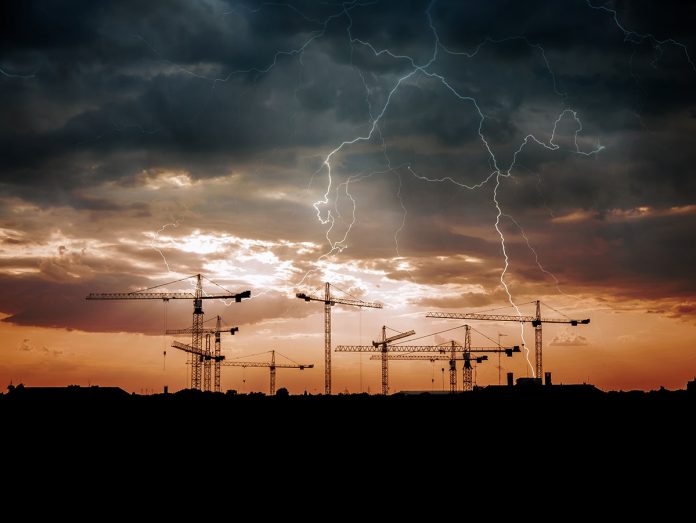Are we asking the right weather-related questions – and can we trust the answers? Shaun Pammenter MSc, meteorologist at MetSwift, takes a look
We have become so accustomed to the ease of almost everything these days, where next day delivery is the norm. Timelines are tight and the consequences of missing them ever more costly. Construction is often a mix of new world timelines and the old school realities of heavy industrial equipment and pouring concrete.
Modern construction software allows for the integration of countless variables, from design to completion, and all within precise timelines and tolerances. Unfortunately, the real world provides big, fat variables that no BIM software can really be expected to resolve. One of the largest variables is certainly weather.
“Weather is variable and can cost me money”- that’s not news to anyone! Of course, weather has always had an impact on construction.
Sometimes the weather is just bad and falls outside the tolerances for the task at hand, but there are times that the answer to the pertinent question would make all the difference. If we dig a little deeper with our weather-related concerns, the questions we ask of either a meteorologist, or of the weather software, we can begin to make progress in mitigating these weather-related costs.
The right questions
At MetSwift, we are often asked: “Is it going to rain that week? That’s all I need to know!” Let’s examine that statement more carefully. Perhaps not rain, but what about thick fog? A technically correct forecast of no rain does not help much when you are battling to fit water soaked and warped wood panelling.
“What weather could damage these materials or prevent me from installing them?” This question (with the details about the materials) would have made the answer more useful and could have prevented losses.
Forecasts at face value
If on the day of a critical outdoor phase of construction the forecast is for 40% chance of rain. What does that really mean?
That could mean 40% chance it rains all day or for 10 minutes, with no indication of the amount of rain either. Depending on the specific job, light drizzle might be manageable or make the day a write off. A 40% chance of heavy afternoon showers could mean a job must be completed by midday to prevent machinery being damaged. The specificity of the question and the quantification of the answer makes all the difference.
Just how good is my forecast?
Often, we do ask the right question. We know our business; the materials we’re using and timeframes that they are vulnerable to the elements. Sometimes, the questions we would like to ask are simply beyond the scope of the weather service available.
Simply put, numerical weather modelling has always been a trade-off between the amount of maths required to solve a problem and the amount of computing power you can throw at it. Weather services, in both private and public sectors, are operating some of the biggest computers on the planet, but there simply isn’t the return on investment to warrant the huge additional cost to improve the resolution of forecasting in some areas or timescales.
It might be quite difficult to recognise from a phone app the resolution of the forecast. Large-scale models omit fine detail, but geographic features and bodies of water can produce significant local effects. These local effects can be very costly to a project and completely missed by large-scale models. It’s important to make sure your forecast matches the requirements of your job.
If it is wrong, just how wrong can it be?
By its very nature, an automated forecast must be definitive in its outcome. This is the forecast for this place, at this time. What are the chances its wrong, and what happens if it is?
For a project in winter near one of the Great Lakes. After a cold front passes from the north, the air mass is cold but usually dry so no snow could be forecast. It only takes a small change in wind direction, the air to move along the coast, travel for hundreds of miles over the lake picking up moisture and producing a massive snowfall that was not ever forecast. This small change would normally go unnoticed on a jobsite, but on this occasion, it had a significant impact.
Knowing the weather “what ifs” mean decisions are more informed about these possibilities and the cost they could carry.
Knowing the right question
It may be the weather information being used does not provide the detail required but knowing that fact is half the battle. Usually the information is there if you know what you are looking for. Without changing the weather information available but carefully examining the possibilities and their effects, we can make far more informed decisions that could save many hours of downtime… and soggy wood panelling.
Metswift
Tel: +44 (0)207 846 3277
+44 (0)7557 782317
Please note: this is a commercial profile.














